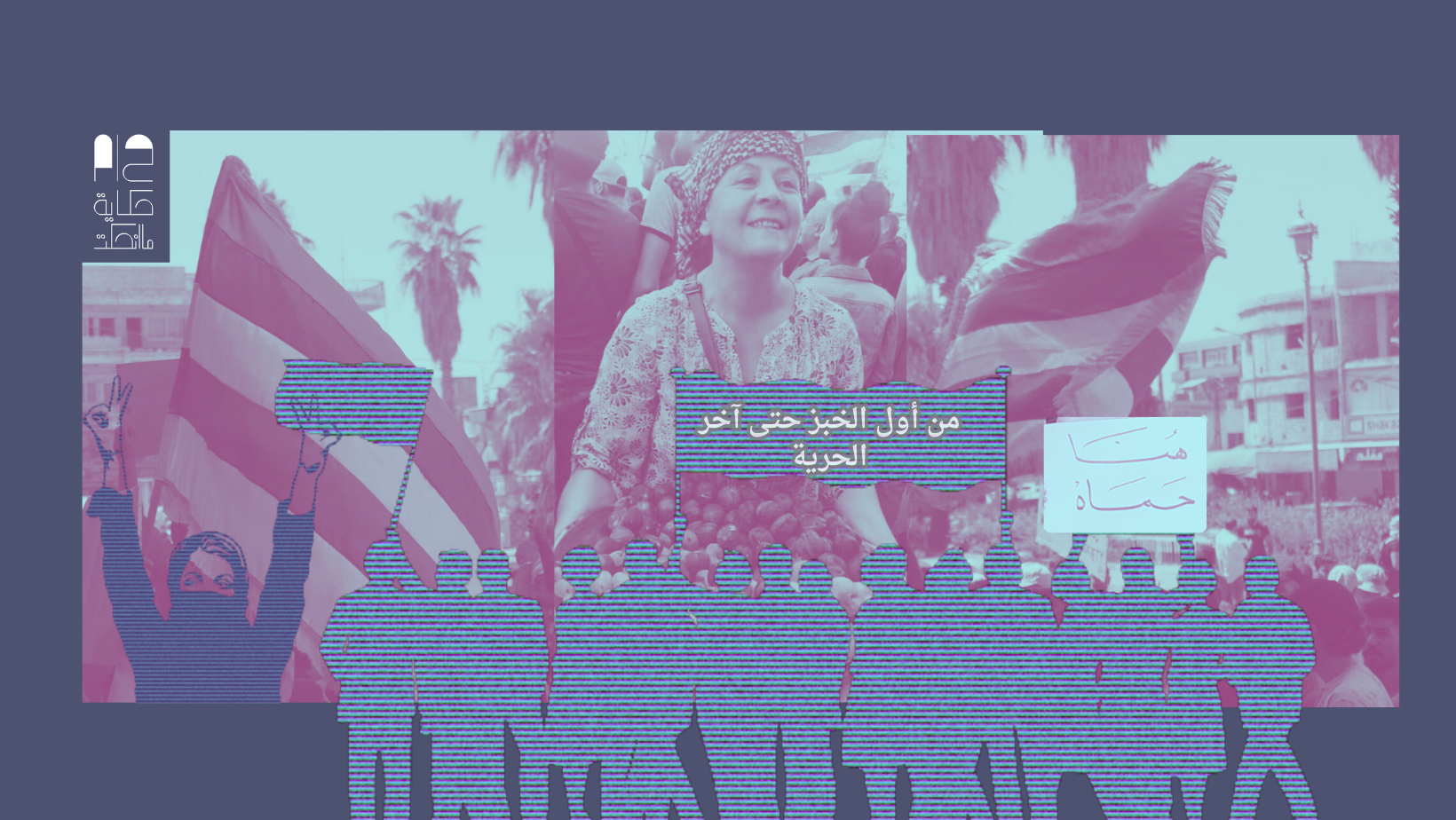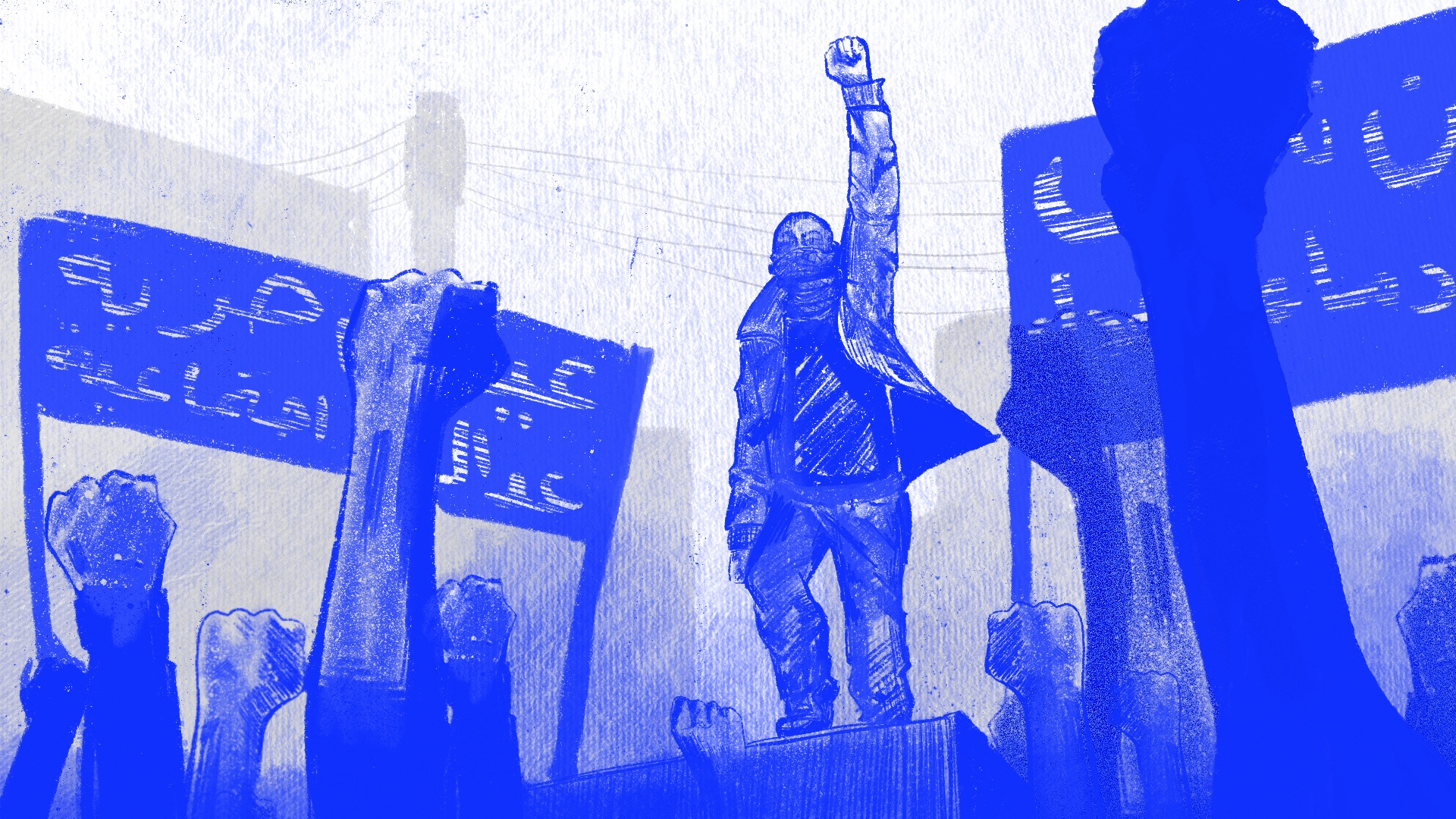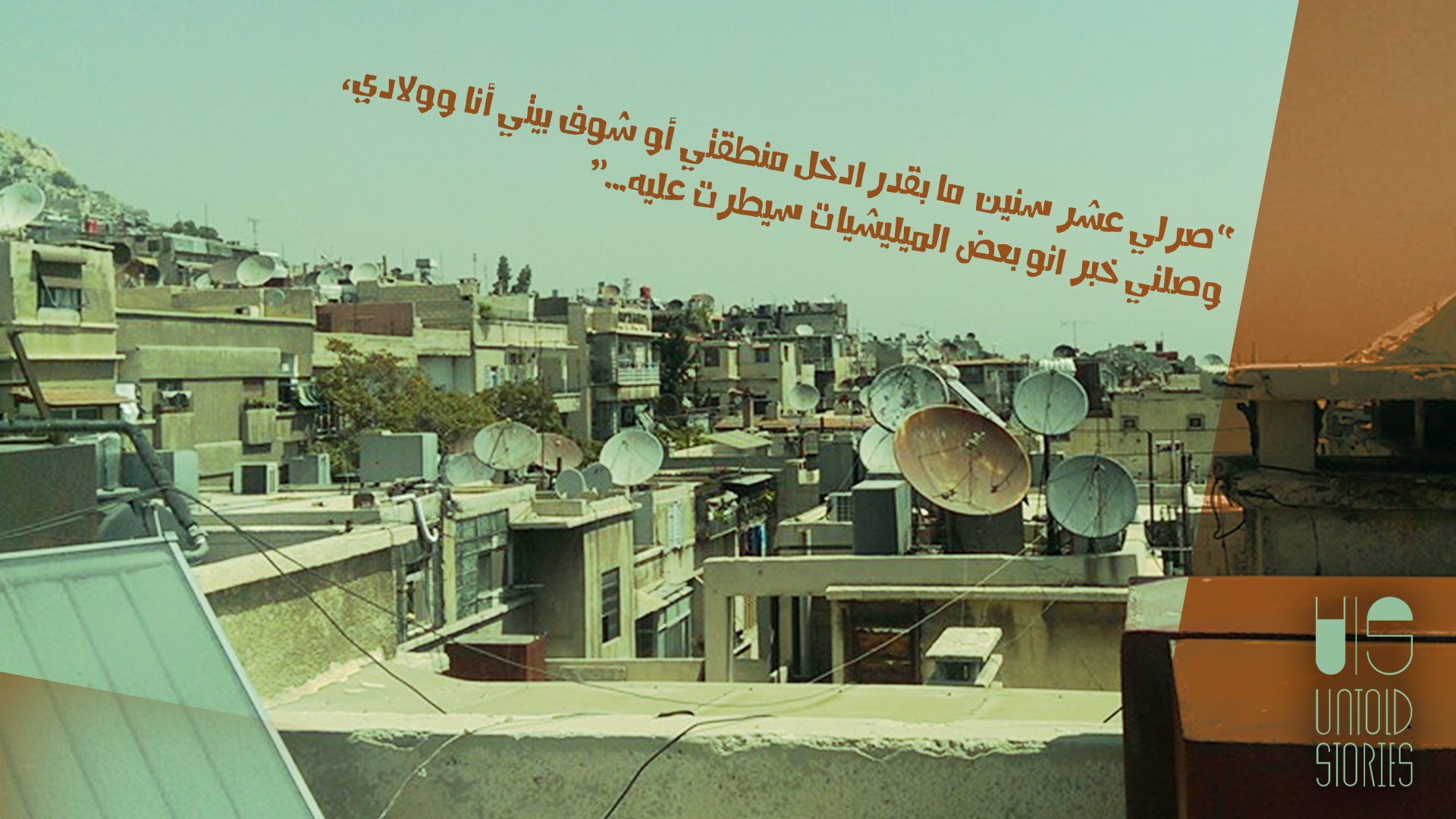“This article was produced within the project «Empowering the Next Generation of Syrian Women Journalists» in partnership between the «Syrian Female Journalists Network» and «UntoldStories». This article was produced under the supervision of journalist Maisa Salih.”
Fadia Sleiman, like many other residents in the northeastern regions of Syria, has never had the opportunity to participate in activities organized by civil society organizations. The thirty-year-old woman hails from the village of Jam Sharaf in the countryside of Derik (al-Malikiyah), an area that has never been a field of activity for such organizations.
"Organizations, in all their forms, have been closely associated in people's minds with relief efforts. Despite my understanding that developmental organizations aim to enhance society, they have failed to convey a clear understanding of their work to the local community in the region." This is how Fadia describes her perspective on the activities of civil society organizations operating in northeastern Syria and implementing various development programs.
The proliferation of civil society organizations in Syria, particularly in northeastern Syria, is a relatively recent phenomenon compared to the situation before 2011. Earlier, there were only a few charitable associations and those affiliated with the ruling party, such as the Peasants’ Union and the General Women's Union, among others. Civil society organizations were notably absent from the scene.
After 2011, new civil society organizations emerged as an emergency response to the war, bringing about a state of insecurity, economic instability, and social unrest. This led to unorganized interventions that created confusion among the local community regarding the nature of these organizations’ work.
In northeastern Syria, 371 local organizations have been licensed. These organizations implement various developmental programs and operate in different sectors, including peacebuilding, development, support for marginalized groups such as women and children, and youth, psychological assistance, environmental issues, and more. This information is based on the latest database of the Humanitarian Organizations Office in Qamishli, one of the offices responsible for regulating the work of various organizations in the northeastern Syria region under the “Autonomous Administration of North and East Syria.”
Rafi Ismail, a forty-year-old man from Qamishli, attributes the limitations of civil society organizations’ role in his city to the division and discrimination in the areas where these organizations operate. According to Ismail, "The majority of activities and projects of civil society organizations are concentrated in the western part of the city due to the location of their headquarters. Meanwhile, the eastern part experiences clear marginalization, leading to a lack of motivation among the locals to interact with the work of these organizations."
On the other hand, Naz Hami, a civil activist, and facilitator at the Syrian Civic Space Initiative, explains that the local community cannot be blamed for confusing civil and relief work. She asserts, "Civil work was absent in Syria before 2011, and the local community was not familiar with the nature of these organizations’ activities. This triggered a response when civil society organizations emerged and became active in the region."
"Confusion also arose within civil society organizations themselves by prioritizing between their civil work, which involves awareness, community participation, governance, and others on one hand, and the urgent need at that time to provide relief and humanitarian response on the other hand. Despite not being considered as part of their primary tasks, these organizations engaged in humanitarian efforts," says Naz. She further notes that conducting awareness sessions was deemed unsuitable at a time when the local community required humanitarian aid. Despite attempts to adjust their approach, convincing the local community of the boarderrole of these organizations remains challenging due to the community's ingrained reliance on them for relief.
Progress that Has Not Yet Reached the Essence of Civil Society Organizations' Activities
"The lack of a civil society culture in Syria has prompted a majority of activists and local community groups to establish civil society organizations without a genuine understanding of institutional and civil work, the community's needs, and the proper allocation of funds to address societal issues," says Majd Dawi, a board member at the ASO Consultancy and Strategic Study Organization. He adds that economic conditions and a lack of job opportunities in other fields led many young people to turn to civil work.
Dawi summarizes the consequence by highlighting that most of these organizations have primarily focused on humanitarian and relief work, often overlooking crucial elements such as peacebuilding, conflict resolution, dialogue promotion and engagement, and policy reform—fundamental aspects integral to the mission of civil society organizations.
This perspective on the functioning of civil society organizations extends beyond the views of activists alone. Similar findings have appeared in studies and surveys conducted by research centers assessing the operations of civil society organizations. In a report prepared by the "Impact" research center in 2020 and 2021, surveying 767 organizations, with 90% operating inside Syria and 222 organizations active in northeastern Syria, results revealed that 51% of civil society organizations are primarily engaged in humanitarian relief and social services, followed by development at 49%, education at 36%, and health at 35%.
"The lack of a civil society culture in Syria has prompted a majority of activists and local community groups to establish civil society organizations without a genuine understanding of institutional and civil work, the community's needs, and the proper allocation of funds to address societal issues".
"I don't believe it is correct to label associations and organizations in the region as civil society," says Alan Hassan, the General Manager of NEXTEP, a local civil society organization based in Qamishli. He points out that the term civil society originated in Europe after a long history of intellectual development, starting in the seventeenth century in the Netherlands and England. Overtime, it defined itself as associations and organizations.
Alan further adds, “the use of the term civil society requires the presence of free individuals, the separation of society from the state to manifest itself outside the state's violent mechanisms, along with the prevalence of contractual relationships among citizens instead of mere membership. These conditions are absent in our country's current situation, leading to the perpetuation of a term that does not precisely capture our present reality.”
Naz Hami emphasizes that some organizations contribute to perpetuating the misconception. They still adhere to donor directives to ensure their sustainability without fully considering the harm this may causes to the concept of civil society. It's worth noting that is unintended, as it represents an attempt to maintain their current sole source of sustainability—donor agencies.
Rima Khalid, a thirty-year-old woman from Amuda, has never participated in a survey conducted by a civil society organization in the region regarding project design. Consequently, she believes that the lack of a comprehensive needs assessment process by these organizations and the exclusion of local community members in these operations are the primary reasons for the community's confusion about the essence of these organizations' work.
Challenges that Must Be Overcome to Achieve Development and Peacebuilding
"Distributing aid and food baskets is part of the emergency response phase, preceding the stability that comes before the recovery and peacebuilding phase. However, the local community's reliance on this fomr of relief has reduced its involvement in development and peacebuilding efforts," says Hassan Al-Shuaib, an activist in the field of developmental initiatives.
This theory finds support in tangible data, indicating a growing inclination among organizations to prioritize relief distribution during emergencies and temporary displacement waves. This trend continued, but after the collapse of the Syrian pound against the US dollar, societal demand for relief distribution rose. Here, societal dependency became evident. Organizations found themselves confined to a relief-centric framework, sidelining developmental work, according to Hassan.
Protests in Sweida: From First Bread to Last Freedom
09 October 2023
Naz Hami points out that donors play a role in the challenges facing civil society organizations by directing their activities, negatively impacting their proper orientation. Additionally, local authorities impose regulations and laws that hinder their operations.
"These organizations encounter various challenges, such as the availability of qualified personnel who contribute to shaping the overall image of civil society. Many organizations lose their skilled staff to international organizations or due to migration.” According to Naz, the higher salaries offered by international organizations, improved working conditions, and more favorable migration opportunities serves as motivation factors for some of these cadres to join them.
Involving the Local Community and Understanding the Essence of Civil Work: A Path to Achieve It
Civil society organizations in northeastern Syria are actively seeking mechanisms to enhance their work and address the challenges of increasing local community involvement in their activities. As a result, the use of “quotas” has emerged as a tool to instigating change, ensuring the representation of marginalized groups in society. These quotas have been employed by Civil society organizations, in an attempt to impose representation for these groups in decision-making centers and various activities.
For instance, the organization NEXTSTEP, under the leadership of Alan Hassan, has adopted measures to engage individuals from the local community who have not previously participated in civic activities. Alan explains, "As a step to rebuild trust with the local community, we allocated quotas for them, including women and youth. We conducted continuous needs assessments, designed interventions based on them, and addressed their issues through media content provided by the Nextstory platform of Nexteb, dedicated to development media, and encapsulated in its verbal slogan: 'The story is you.'"
Hassan believes there is a genuine need for precise needs assessments, the implementation of projects fostering local economic development, and the rigorous monitoring of their impact. These organizations ought to advocate for improved economic and agricultural policies in the region among decision-makers, promote citizenship culture through community initiatives, and ultimately transform beneficiaries into valuable participants through a development-based change theory.
Enhancing transparency and accountability in organizational and financial operations is essential for rebuilding trust in these organizations within the local community. Moreover, effective coordination and collaboration with local media are crucial to disseminating the correct understanding of civil society organizations’ role. This coordination should extend beyond media involvement to include influential community leaders advocating for the essence of civil society work, as emphasized by Majd Dawi.
According to a study conducted by the “IMPACT” Research Center, data collected from organization workers indicates a limited understanding of the true role civil society should theoretically fulfill as a space for change. The study reveals that two-thirds of the sample restrict civil society's role to humanitarian response and addressing conflict conditions. Despite the importance of humanitarian response, the study emphasizes that the essence of the role lies in being a transformative activity towards democracy, as well as the protection of rights and freedoms.
To realize these objectives, the perspectives of these civil society activists suggest implementing several measures. These include allocating quotas for the local community in project design and implementation, focusing more on the needs of the local community in executed projects, activating genuine assessments of their needs, promoting transparency and accountability in institutional work, and intensifying efforts to improve the economic situation as a solution to deepen the impact of developmental work in the region.
"I, like the rest of the youth in the region, have unexploited potential that is not optimally utilized. It is the responsibility of civil society organizations to invest in these potentials and help activate them so that we can contribute to the prosperity of our communities that we have refused to abandon despite the temptation of migration," says Fadia Suleiman.









